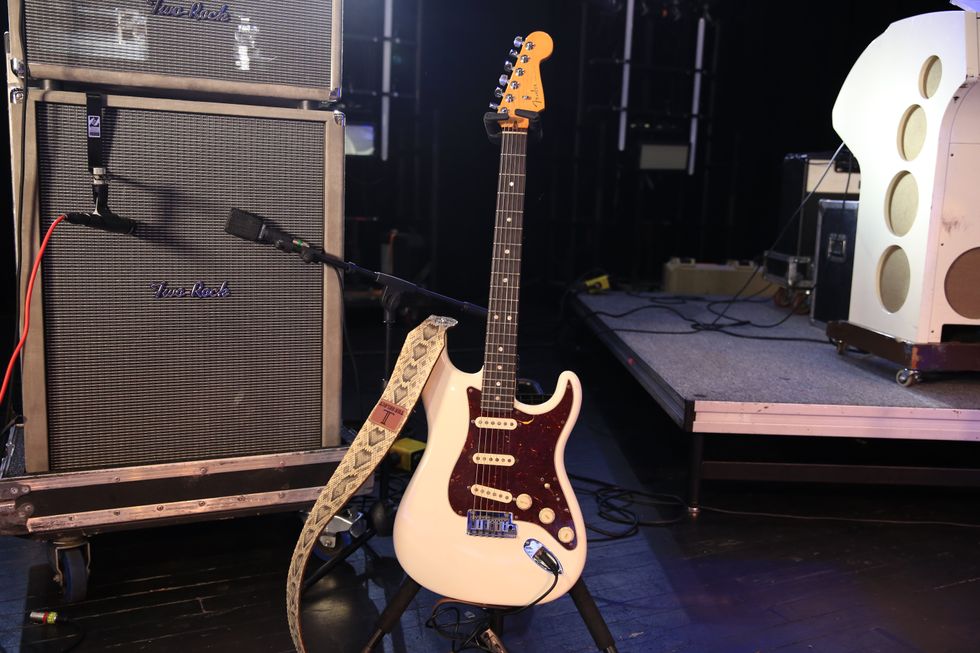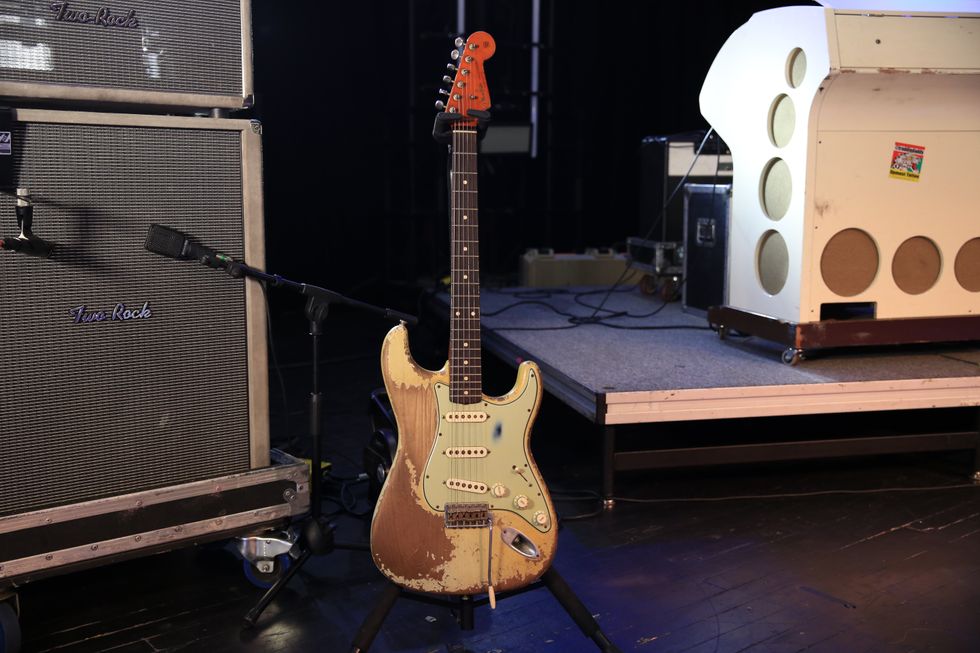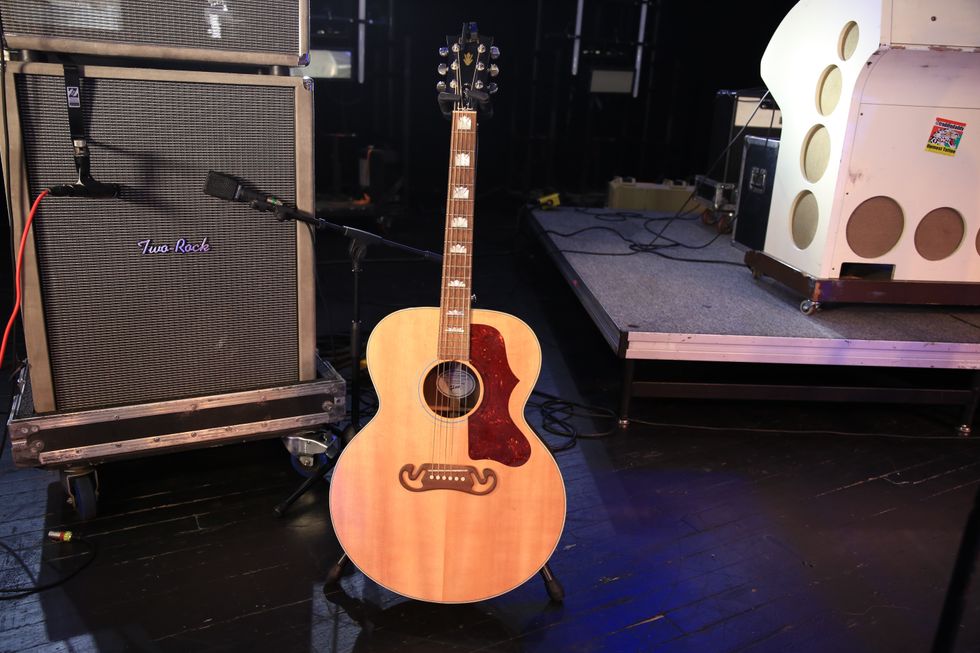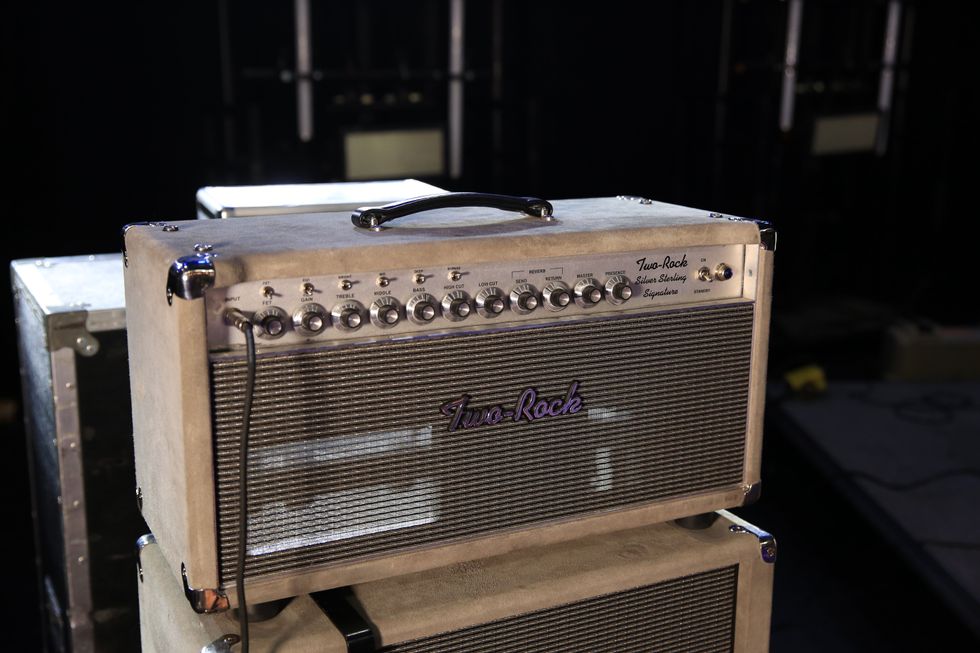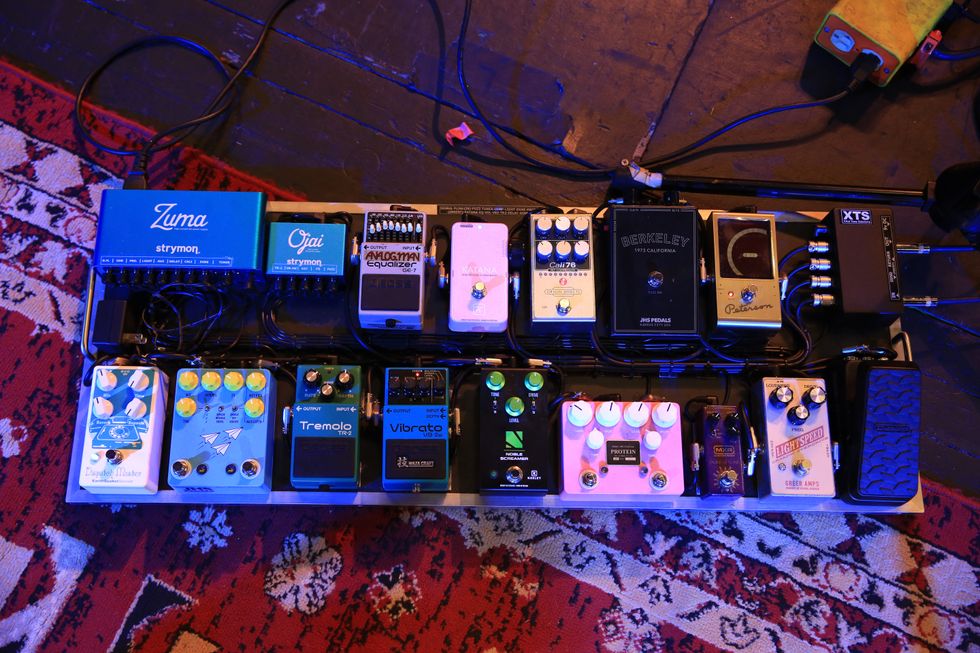Is there anyone out there who doesn’t know the Troggs Tape? The one where the ’60s British band has an epic studio meltdown arguing idiotically about how to record a new song? If not, YouTube it this instant, assuming you can handle rude language. I’d embed the clip here, but it doesn’t seem wise to populate a PG page with 500 or so f-bombs.
But just a few can’t hurt! Take this memorable exchange:
“I agree—it is a good song.”
“But it f**king won’t be unless we spend a little bit of f**king thought and imagination to f**king make it a f**king number one! We’ve got to put a little bit of f**king fairy dust over the bastard, you know?”
Dude’s got a point. While there’s no universally accepted definition of f***king fairy dust, most probably interpret it as a splash of high-pitched color or animation that seduces the listener into a recording. And one of the best ways to add f-dust is to double acoustic guitar parts in higher registers. Sometimes it’s simply a matter of slapping on a capo and transposing a part, a topic we’ll tackle soon. But first, let’s evaluate some alternate f-dust instruments.
Double Trouble?
Sometimes acoustic tracks are doubled as literally as possible, as in Ex. 1. Here a guitar enters on the left channel, and then gets doubled as precisely a possible on the right using the same instrument. Even this simple technique generates high-end energy as the guitars’ upper harmonics phase against each other. (I added drums and bass midway through to illustrate how you can still perceive the animation in a full-band arrangement.)
But sometimes when you add a higher-pitched part—especially one that requires different fingering—it’s not always possible, or even desirable, to clone the previous part. It’s often good to simplify, as in Ex. 2. Here the second guitar is a 12-string. It’s tuned a whole-step below standard, so while the original part is in C major, I finger the overdub in D. I omit most of the low notes, which are likelier to add muck than animation, and focus on the soprano melody. Even so, the lower-octave notes bulk up the part while adding the desired dust.
With 12-string, it can be a crapshoot whether a particular note gets doubled in unison or at the octave, since the lower four string pairs are tuned in octaves while the top two are in unison. Sometimes that randomness works, but you may prefer a consistent sound as you shift between strings, like you get with the mandolin in Ex. 3. (All mandolin string pairs are unisons.) Also, it adds less mass than the 12-string with its low strings—these fairies are smaller. The mandolin is tuned to its standard G–D–A–E (low to high), which requires non-guitar fingering.
Gryphons Are Real
If you prefer a mandolin-like effect on a more guitar-like instrument, you can’t beat the Veillette Avant-Gryphon. It’s an octave-up 12-string, but with all string pairs in unison as on a mandolin. It’s tuned a minor-seventh above standard—that is, like the 12-string in Ex. 2, but up an octave. That means Ex. 4 is also fingered in D.
Gryphons are beautiful instruments, but not everyone can afford a fairy duster that costs over a grand. Fortunately, you don’t need a fine instrument to get a fine effect. For example, the mandolin in Ex. 3 is a cheap but nice-sounding Kentucky model from Saga. Ex. 5 also makes a dramatic effect with a low-cost axe: a tiny Baby Taylor travel guitar in “Nashville high-strung” tuning. Here, the top two strings are tuned standard, while the lower four are an octave up from normal. (Obviously, you need to restring for this effect. Some players simply swipe the high strings from a standard 12-string set.) The result is a lighter, leaner version of Ex. 4, with no low notes and less mass overall.
The downside to inexpensive instruments like these is that they can be a bitch to intonate. It took me a few tries to lay down the Ex. 5 overdub more or less in tune.
Ukulele can be another low-cost fairy duster. Ex. 6 employs a baritone uke tuned C–F–A–D, which is like the top four guitar strings when you capo at the 10th fret, but with the lowest string an octave higher.
While the previous examples use bright-toned high strings to contrast the soft warmth of my small-bodied mahogany Martin acoustic, the nylon-stringed uke is even softer and warmer than the Martin, and the parts mesh in a very different way. Ex. 7 works in a similar fashion. Can you identify the instrument?
Yup, we’re back where we started—it’s the same guitar as on the initial part, but capoed at the 10th fret for a tuning close to the ukulele’s. Sometimes the best approach is to just use the instrument you started with, but with the part voiced elsewhere on the neck. We’ll dive deeper into that technique next time.
One More F**king Thing
Just for fun, I pulled up all seven parts at once, and to my amazement, they actually sound kind of cool together. I listened only to the original guitar as I tracked each overdub, so Ex. 8 is a bit of a rhythmic mess, though it could be assembled more precisely. Might you ever use this harpsichord-from-hell sound? It depends on the context!
But at this point, we’re not really sprinkling fairy dust on the bastard—more like burying the bastard under a mountain of fairy droppings. Bon appétit.












![Rig Rundown: Russian Circles’ Mike Sullivan [2025]](https://www.premierguitar.com/media-library/youtube.jpg?id=62303631&width=1245&height=700&quality=70&coordinates=0%2C0%2C0%2C0)






